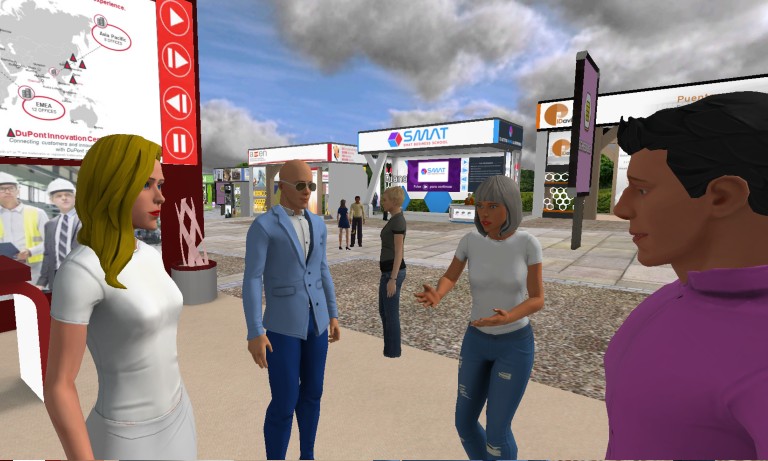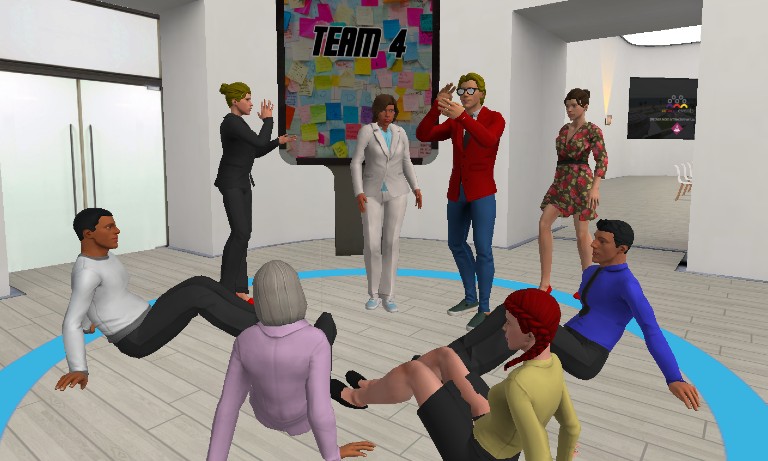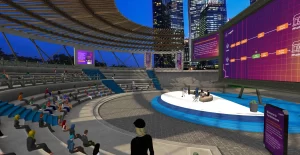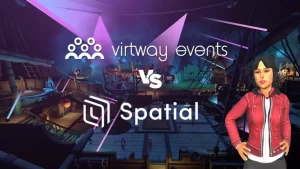
A virtual avatar is a unique way to give life to an online event, a website, social network or any digital channel really. It’s a graphic image that represents a person in a virtual world, and it’s becoming increasingly more common to use online avatars to recreate real situations in business meetings, fairs or any type of event.
A virtual avatar is our alter ego online; our own reflection behind a screen. An avatar is a representation of ourselves in 3D, in an original and unique way, and no two avatars are the same, whether it be how they look, move or interact within a virtual world. The ways in which they can communicate are infinite, and with the fast pace of virtual technological advances, avatars will only become more and more life-like.
Are Online Avatars a New Concept?
Although we believe that the term avatar is novel, something invented in this digital era in which we are immersed, but that is not the case. In fact, you may be surprised to learn that their origen is Hindu, a religion that has been in practice since 500 BC. They were originally used to represent gods or high-ranking teachers.
In modern times, the word avatar was resurrected by Richard Garriot, a British video game designer. In 1985, this visionary first used the term when he created his game “UltimaIV: Quest of the Avatar”, where a symbol was used to represent players.
Since then, avatars have not stopped evolving, and their use is increasingly common in online meetings, videoconferences, webinars, virtual training sessions, team building activities and even webcasts. In fact, any online event planner should count on virtual avatars as a resource for added, guaranteed success.
The Best Scenarios for a Virtual Avatar
The virtual revolution has made the Internet a place where many of our work activities occur. Therefore, having a good presence on the web, both personally and professionally, is fundamental to increase our reputation and achieve business evolution.
To keep up with the evolving times, avatars have become highly valued by digital professionals who continually recommend their implementation in various business actions.
Avatars are an important factor in eCommerce platforms and, in these cases, interactive avatars create trust and make communication with customers direct and easy.
Their use on corporate websites is also significant, as they convey a sense of prestige and seriousness. A potential client’s first impression, whether it be virtual or not, is of utmost importance. The use of avatars that smoothly communicate the values of the company in a specific way, will convert visitors into faithful customers. Experts refer to this as visual coherence.
3D Interactive Avatars Combatting Zoom Fatigue
Videoconferences, online meetings, remote workspaces… the patterns of business communication have evolved in an impressive way over the last few years. One of the most successful is in that of virtual events, meetings held on virtual platforms in replicas of real-life scenarios.
The benefits of virtual activities compared to traditional, face-to-face events are considerable, and avatars are a huge contributing factor. They move like fish in water and their protagonism is of great relevance.
These 3D virtual events immitate the real experience of attending an event, as we do in real life, but through a virtual format. This is done by virtual event platforms such as Virtway Events, which provides companies with the most advanced 3D technology to open the doors of the virtual world.
The possibilities offered are endless, and all are marked by creativity and innovation. In this sense, the use of interactive 3D avatars in these virtual environments is remarkable. They simulate each of the participants – they even imitate their physical appearance – and allow them to create a scenario in which they can interact and communicate in a very effective way.
In fact, the advantage of Virtway Events’ platform compared to other virtual experiences is that it allows conversations and voice over IP in a natural way. Its 3D sound applications are also capable of regulating the volume according to the proximity between avatars in real time.

For all these reasons, interactive avatars acquire great importance in virtual events: if a company is hosting an online meeting in which videoconferences are given, the company’s representative can use his or her own avatar to contact attendees and resolve their doubts in real time.
The interlocutors will also be able to exchange any kind of information in different formats, have live conversations and even express their emotions through animations (such as giving a round of applause, waving hello or even giving a thumbs-up).
In the specific case of virtual training activities, these are extremely interesting options in order to connect with colleagues from within the same company working from different locations.
In conclusion, 3D avatars recreate realistic situations and are able to design immersive experiences within a virtual world. Their facial and body movements are natural, and when accompanied by the integration of 3D technologies, the result is amazing. Your virtual alter ego comes to life in the Metaverse.






